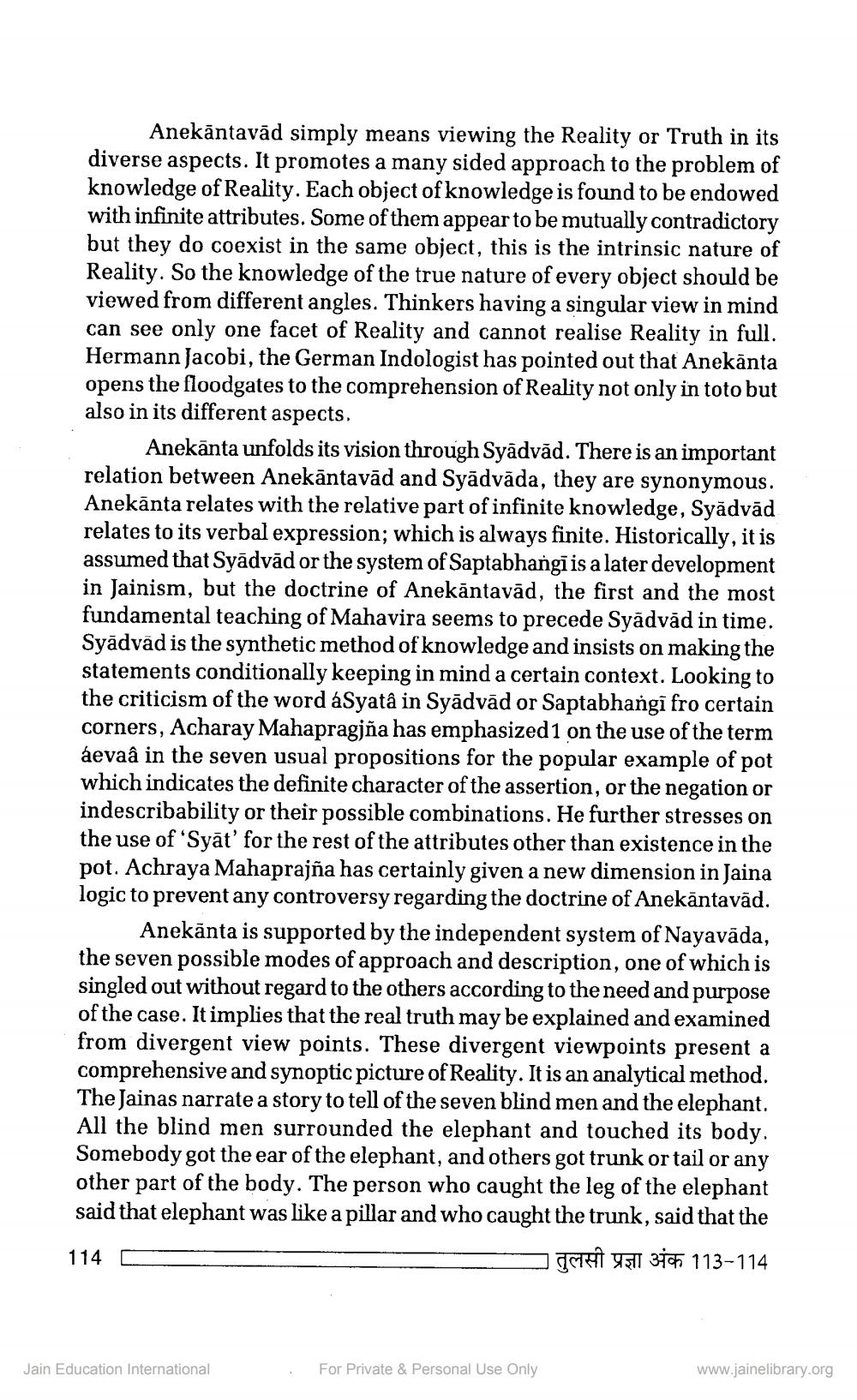________________
Anekāntavād simply means viewing the Reality or Truth in its diverse aspects. It promotes a many sided approach to the problem of knowledge of Reality. Each object of knowledge is found to be endowed with infinite attributes. Some of them appear to be mutually contradictory but they do coexist in the same object, this is the intrinsic nature of Reality. So the knowledge of the true nature of every object should be viewed from different angles. Thinkers having a singular view in mind can see only one facet of Reality and cannot realise Reality in full. Hermann Jacobi, the German Indologist has pointed out that Anekānta opens the floodgates to the comprehension of Reality not only in toto but also in its different aspects.
Anekānta unfolds its vision through Syādvād. There is an important relation between Anekāntavād and Syādvāda, they are synonymous. Anekānta relates with the relative part of infinite knowledge, Syădvad relates to its verbal expression; which is always finite. Historically, it is assumed that Syādvād or the system of Saptabhangī is a later development in Jainism, but the doctrine of Anekāntavād, the first and the most fundamental teaching of Mahavira seems to precede Syżdvād in time. Syādvăd is the synthetic method of knowledge and insists on making the statements conditionally keeping in mind a certain context. Looking to the criticism of the word áSyatâ in Syādvād or Saptabhangi fro certain corners, Acharay Mahapragjña has emphasized1 on the use of the term áevaâ in the seven usual propositions for the popular example of pot which indicates the definite character of the assertion, or the negation or indescribability or their possible combinations. He further stresses on the use of 'Syāt' for the rest of the attributes other than existence in the pot. Achraya Mahaprajña has certainly given a new dimension in Jaina logic to prevent any controversy regarding the doctrine of Anekāntavād.
Anekānta is supported by the independent system of Nayavāda, the seven possible modes of approach and description, one of which is singled out without regard to the others according to the need and purpose of the case. It implies that the real truth may be explained and examined from divergent view points. These divergent viewpoints present a comprehensive and synoptic picture of Reality. It is an analytical method. The Jainas narrate a story to tell of the seven blind men and the elephant. All the blind men surrounded the elephant and touched its body. Somebody got the ear of the elephant, and others got trunk or tail or any other part of the body. The person who caught the leg of the elephant said that elephant was like a pillar and who caught the trunk, said that the 114 0
Tot yu 31ch 113-114
For Private & Personal Use Only
Jain Education International
www.jainelibrary.org




